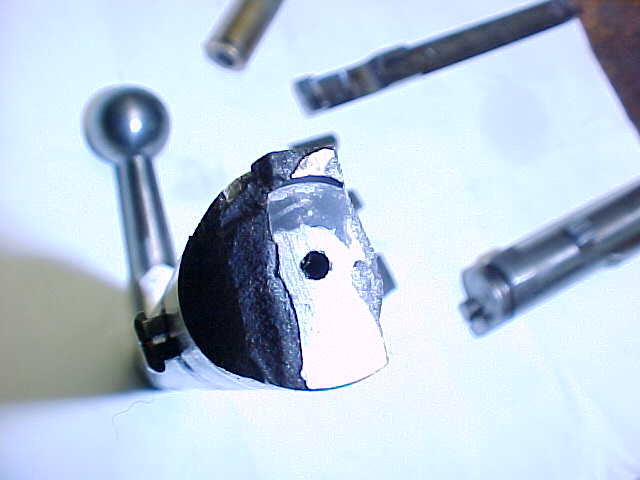Here's a different point of view from "primal rights". Now I know this guy riled a few of us in the past but he might know what he's talking about
Reading pressure is a required skill that all shooters must have. Whether you are shooting factory ammunition or your own handloads, you absolutely must be able to detect and interpret pressure signs on your fired brass.
www.primalrights.com
Cleaning Solvents & Lubricants
Recently we received a rifle back from a customer whom was experiencing chronic pressure over-pressure. The issue was taking place regardless of ammunition used. While we expended a lot of effort to determine the issue over the phone, but could not lock down a cause. I instructed the customer to send the rifle back to us for evaluation. The problem was immediately apparent upon unpacking the rifle. It was dripping in lubricant. The bolt, trigger, bolt raceways, barrel, etc. All were completely covered in oil. This may not bother a semi-auto such as an AR15 in some situations, but it can be extremely dangerous on a bolt action. The reason for this is expressed in the previous paragraph. What is not always immediately apparent is how the transfer of cleaning solvents and lubricants make their way into the chamber. The most obvious sources are the bolt, magazine, and feed ramp. An oiled bolt will tend to transfer that oil to the next round in the magazine. When the bolt is cycled forward, it makes contact with the next round in the magazine along nearly its entire length. If there is a lubricant on the bolt, it will smear that lubricant down the cartridge. When that cartridge is cycled into the chamber, and fired, that lubricant will spread around and coat nearly the entire chamber. The subsequent round after will also be lubricated by the bolt, and be inserted into a chamber completely coated in lubricant by the previous round. Water is quite slick, but lubricants are very much more so! This will almost always result in extreme pressure being transferred to the base of the case and through the action. This particular customer mentioned above did this enough to where you could actually see the words "Hornady 6.5 Creedmoor" imprinted on his bolt face, and the bolt face was permanently damaged due to blown primers. The blame for this could easily be laid on the ammo manufacturer if one were not aware of this lubrication issue. On a bolt rifle, lightly greasing the bolt lugs and other contact points that
never come into contact with the ammunition is advised rather than using oil.
Cleaning solvents are also a prime cause for this kind of issue. When cleaning the bore of a rifle, many shooters do not use a bore guide that seals the chamber. This allows cleaning solvents to drip down the back of the chamber onto the barrel tenon/action joint as well as the front action screw. It's amazing just how that solvent can crawl around from there. It's not a good idea to expose bedding to solvents either. Make sure you control the flow of cleaning solvents when servicing your rifle.
As mentioned above in the section on water as well as this section about solvents and lubricants, if the brass is not allowed to grip the chamber walls properly, all of that pressure will be transferred to the bolt face. This can produce a "false positive" of sorts. You may be led to believe that your ammo or load is too hot, when in actuality it is simply a maintenance issue that is causing the problem.

